ASUS Vivobook Pro 15 OLED (N6506) review – Killer Display, Lasting Battery, Minor Compromises
Design and construction
The design of the ASUS Vivobook Pro 15 OLED (N6506) is clean and non-intrusive, especially in Earl Grey color. The base is stable, we spot a tiny amount of bends below the Arrow keys but that’s okay. The lid is made of metal and it flexes a bit more than usual when we tried to twist it. The dimensions are good for a 15-incher with potent hardware – 1.80 kg and 19.9 mm profile thickness.
The lid can be opened effortlessly with a single hand and the hinge mechanism is pleasantly smooth. Still, the unit is a bit bouncy during angle changing.
The OLED display with an infinite contrast ratio is surrounded by thin bezels. Okay, the lower one is a bit thicker than the other three.
The top bezel houses a 5MP IR Web camera with a privacy shutter and AI Noise Cancelation.
The laptop can lay almost fully flat on an even surface. The base sits pretty high off the ground which positively affects the cooling solution. The dual-tone ErgoSense backlit keyboard is comfortable for work with its long key travel and clicky feedback. Also, the board has a NumPad section and the keycaps offer quiet operation – nice!
No complaints regarding the touchpad. It’s decently sized, and it’s smooth and accurate. The built-in DialPad can be seen in the top left corner of the pad. This feature is very useful for creative apps.
On the bottom plate, we can spot four rubber feet on the sides plus a plastic one in the middle alongisde two speaker cutouts. The hot air is guided via three vents – two on the back and one on the left. Just a small amount of hot air reaches the display under heavy loads because the hinge cover stands right in front of the back vents.
Ports
On the left, you get a USB Type-A 3.2 (Gen. 1) port and an SD 4.0 card reader. The majority of the connectors are on the right side – a power plug, LAN, HDMI 2.1 TMDS, a USB Type-A 3.2 (Gen. 1) port, a Thunderbolt 4 port, a USB Type-C 3.2 (Gen. 2) port, and an Audio combo jack. Both Type-Cs support Power Delivery and DisplayPort functions.

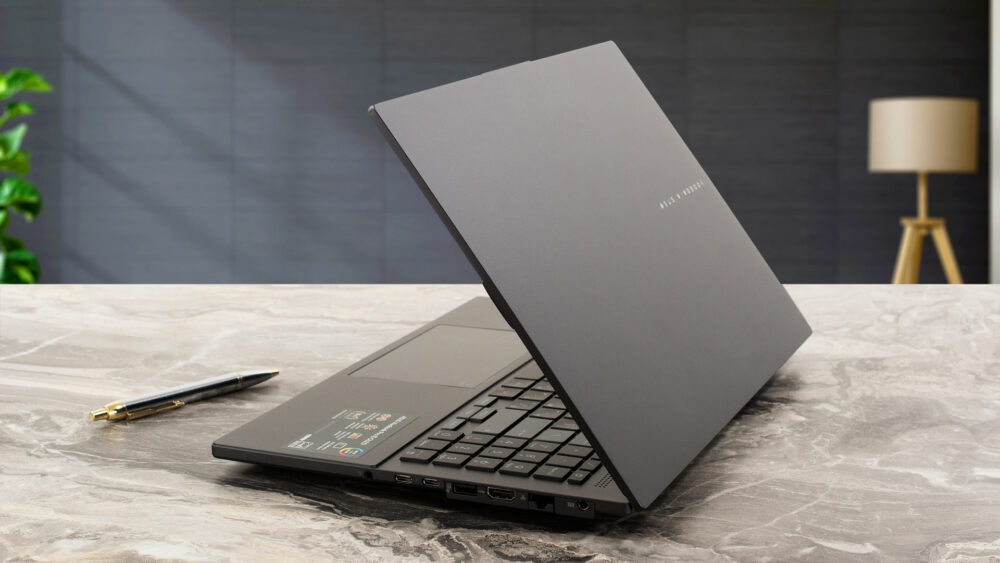
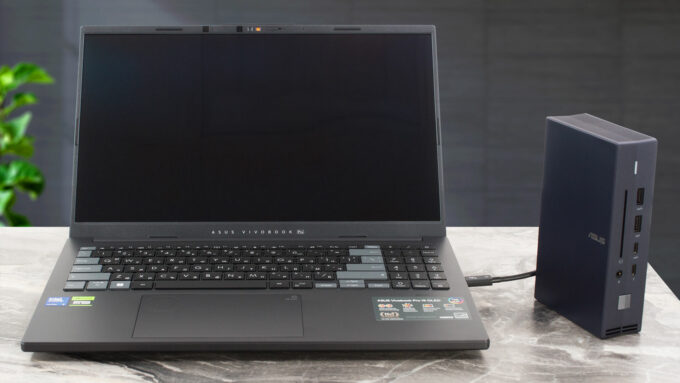
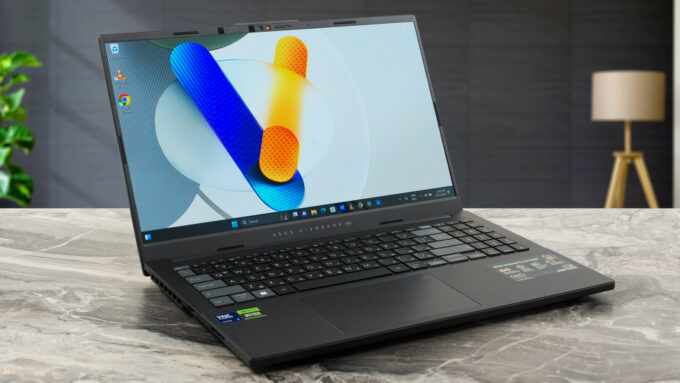
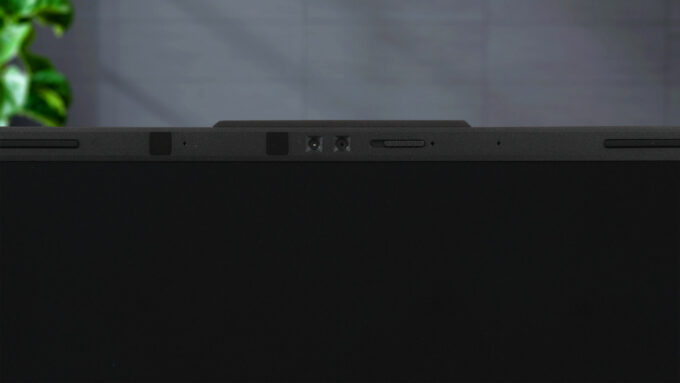
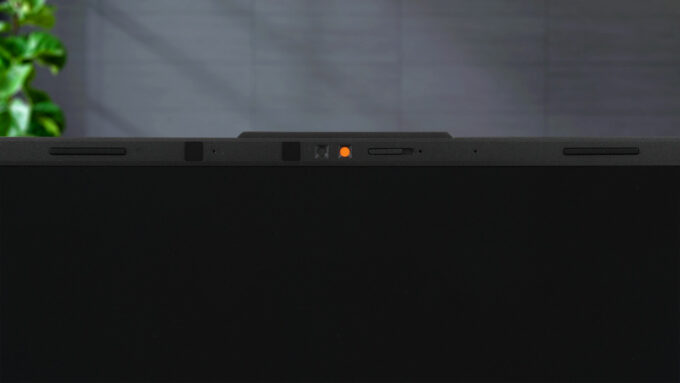
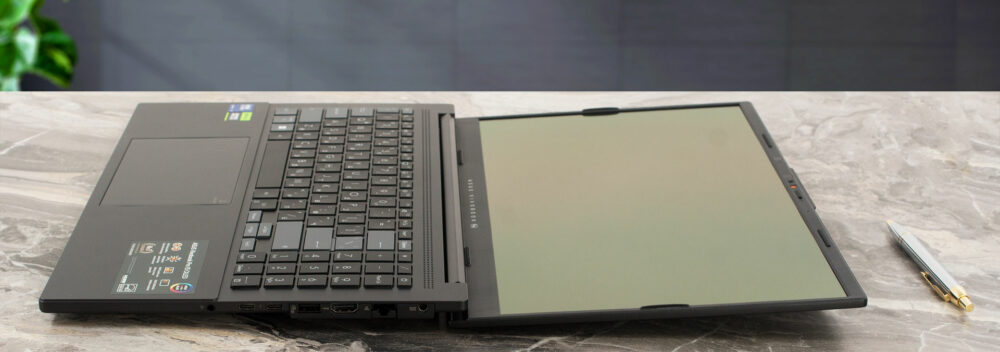
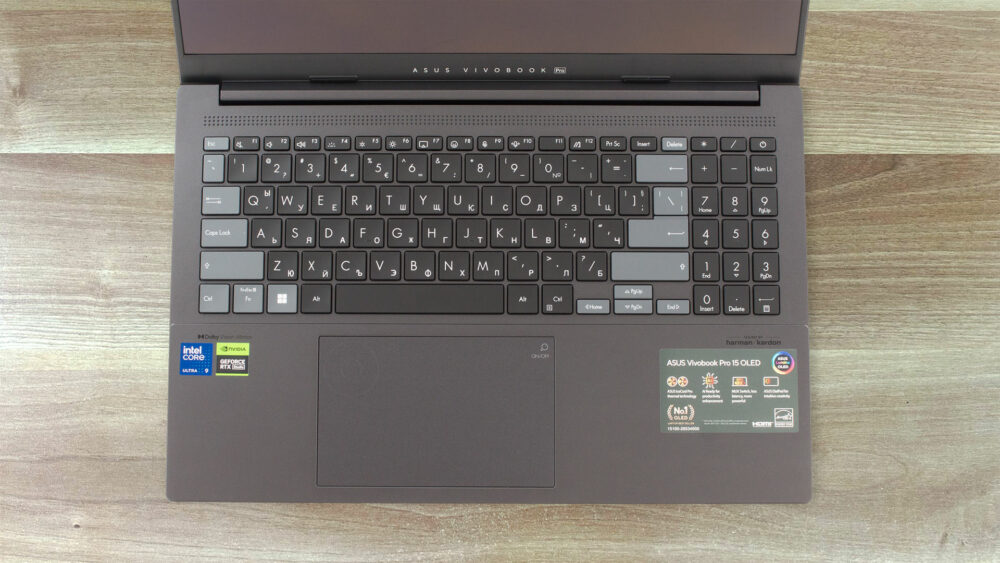
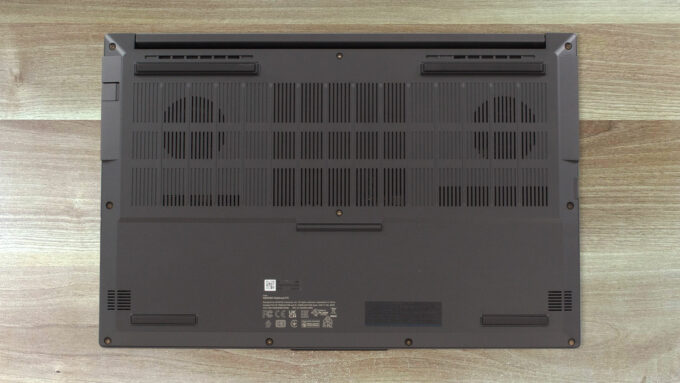
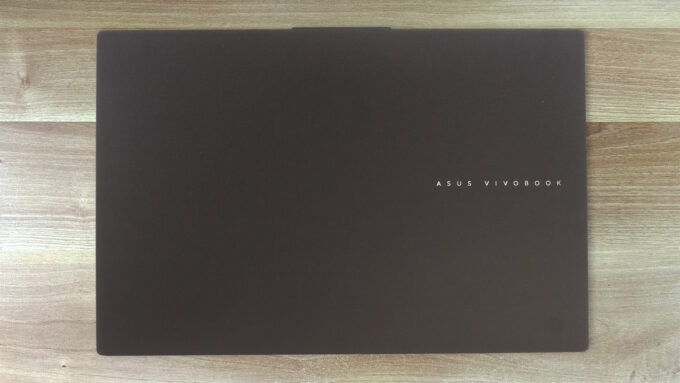










Does the laptop support the installing of a 32GB stick of memory in the sodimm slot or intalling it results in the system not booting up, not recognize the memory or behave strangely? On the zephyrus g14 2022 Asus claims a maximum memory of 32GB but I knew of people reaching 48GB with no problem changing the 16GB stick with a 32GB one.
Thank you in advance.
According to ASUS, the maximum amount of RAM supported is 24GB. However, since the CPU can support up to 96GB, the Vivobook Pro 15 OLED likely wouldn’t have issues running with up to 56GB of DDR5-5600MHz RAM (8GB soldered + 48GB in the SODIMM slot).
Thank you for such a comprehensive review. I would really appreciate if you could incorporate the fan noise for a normal workload – web browsing, movies, etc. This is often left out in favor of fan noise at full load, which is seldom relevant.
How would you categorize the fan noise under normal office work, please?
Is the GPU eco mode disabled when the laptop is connected via the power brick? 🙁
With my current asus laptop I usually always have eco mode on even when connected to power to keep my laptop cool (often have it my lap or chest)
For the display what is the max brightness in HDR (small window and full screen)? Also what is the colour accuracy like in HDR?
Measuring color accuracy in HDR mode is more complex and influenced by various external and internal factors, which is why our current measurements are limited to SDR mode. Additionally, manufacturers typically prioritize more attractive picture over color accuracy in HDR. If you aim for the most realistic colors, working in SDR mode is the better option.
Regarding the size of the white window when measuring screen brightness, we’ve conducted tests with both 10% fill and fullscreen fill. In both cases, the max brightness was similar, just below 400 nits.